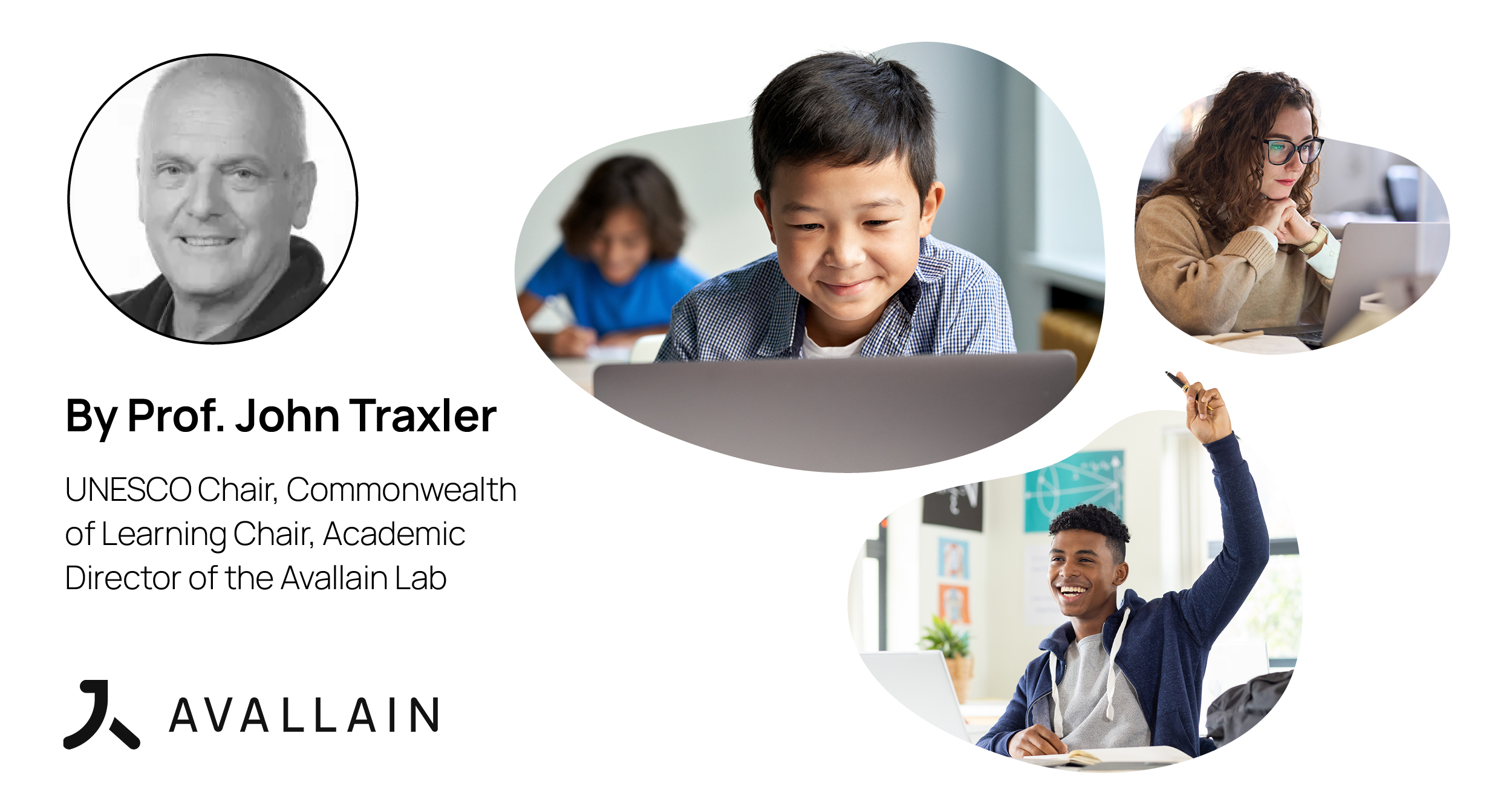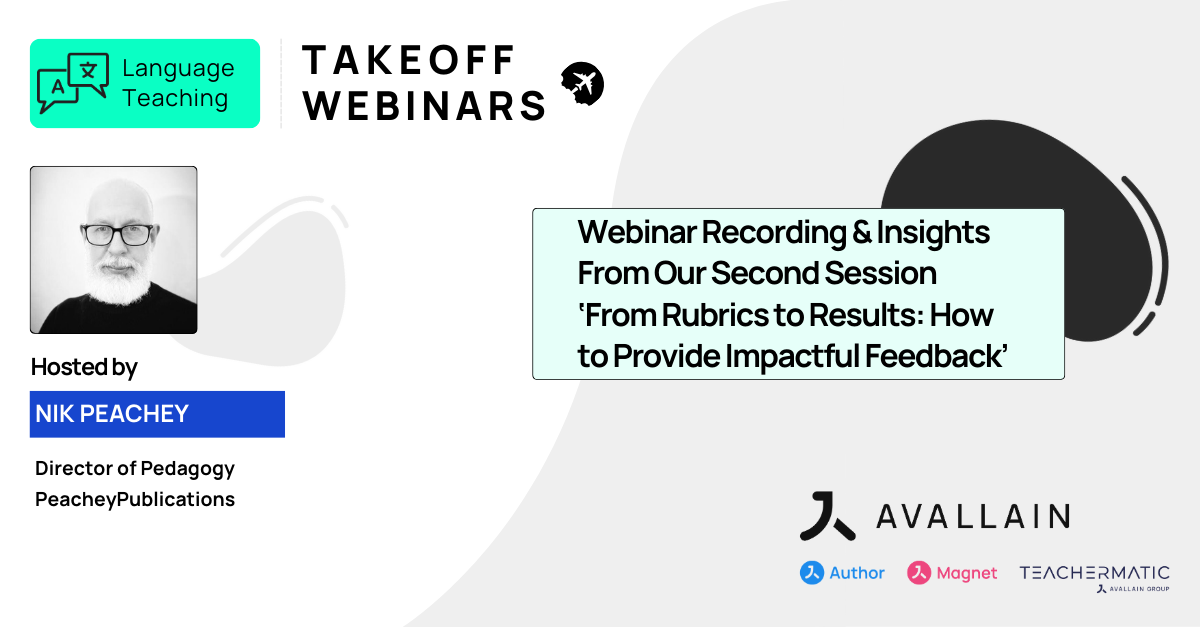As generative AI becomes more deeply embedded in digital education, it no longer simply delivers knowledge; it shapes it. What counts as truth, and whose truth is represented, becomes increasingly complex. Rather than offering fixed answers, this piece challenges educational technologists to confront the ethical tensions and contextual sensitivities that now define digital learning.
Who Owns ‘Truth’ in the Age of Educational GenAI?
Author: Prof. John Traxler, UNESCO Chair, Commonwealth of Learning Chair and Academic Director of the Avallain Lab
St. Galen, May 23, 2025 – Idealistically, perhaps, teaching and learning are about sharing truths, and sharing facts, values, ideas and opinions. Over the past three decades, digital technology has been increasingly involved or implicated in teaching and learning, and increasingly involved or implicated in shaping the truths, the facts, values, ideas and opinions that are shared. Truth seems increasingly less absolute, stable and reliable and digital technology seems increasingly less neutral and passive.
The emergence of powerful and easily available AI, both inside education and in the societies outside it, only amplifies and accelerates the instabilities and uncertainties around truth, making it far less convincing for educational digital technologists to stand aside, hoping that research or legislation or public opinion will understand the difficulties and make the rules. This piece unpacks these sometimes controversial and uncomfortable propositions, providing no easy answers but perhaps clarifying the questions.
Truth and The Digital
Truth is always tricky. It is getting trickier and trickier, and faster and faster. We trade in truth, we all trade in truth; it is the foundation of our communities and our companies, our relationships and our transactions. It is the basis on which we teach and learn, we understand and we act. And we need to trust it.
The last two decades have, however, seen the phrases ‘fake news’ and ‘post truth’ used to make assertions and counter assertions in public spheres, physical and digital, insidiously reinforcing the notion that truth is subjective, that everyone has their own truth. It just needs to be shouted loudest. These two decades also saw the emergence and visibility of communities, big and small, in social media, able to coalesce around their own specific beliefs, their own truths, some benign, many malign, but all claiming their adherents to be truths.
The digital was conceived ideally as separate and neutral. It was just the plumbing, the pipes and the reservoirs that stored and transferred truths, from custodian or creator to consumers, from teacher to learner. Social media, intrusive, pervasive and universal, changed that, hosting all those different communities.
The following selection of assertions comprises some widely accepted truths, though this will always depend on the community; others are generally recognised as false and some, the most problematic, generate profound disagreement and discomfort.
- The moon is blue cheese, the Earth is flat
- God exists
- Smoking is harmless
- The holocaust never happened
- Prostate cancer testing is unreliable
- Gay marriage is normal
- Climate change isn’t real
- Evolution is fake
- Santa Claus exists
- Assisted dying is a valid option
- Women and men are equal
- The sun will rise
- Dangerous adventure sports are character-building
- Colonialism was a force for progress
These can all be found on the internet somewhere and all represent the data upon which GenAI is trained as it harvests the world’s digital resources. Whether or not each is conceived as true depends on the community or culture.
Saying, ‘It all depends on what you mean by …’ ignores the fundamental issue, and yes, some may be merely circular while others may allow some prevarication and hair-splitting, but they all exist.
Educational GenAI
In terms of the ethics of educational AI, extreme assertions like the ‘sun will rise’ or ‘the moon is blue cheese’ are not a challenge. If a teacher wants to use educational GenAI tools to produce teaching materials that make such assertions, the response is unequivocal; it is either ‘here are your teaching materials’ or ‘sorry, we can’t support you making that assertion to your pupils’.
Where educational AI needs much more development is in dealing with assertions which, for us, may describe non-controversial truths, such as ‘women and men are equal’ and ‘gay marriage is normal’, but which may be met by different cultures and communities with violently different opinions.
GenAI harvests the world’s digital resources, regurgitating them as plausible, and in doing so, captures all the prejudice, biases, half-truths and fake news already out there in those digital resources. The role of educational GenAI tools is to mediate and moderate these resources in the interests of truth and safety, but we argue that this is not straightforward. If we know more about learners’ culture and contexts and their countries, we are more likely to provide resources with which they are comfortable, even if we are not.
Who Do We Believe?
Unfortunately, some existing authorities that might have helped, guided and adjudicated these questions are less useful than previously. The speed and power of GenAI have overwhelmed and overtaken them.
Regulation and guidance have often mixed pre-existing concerns about data security with assorted general principles and haphazard examples of their application, all focused on education in the education system rather than learning outside it. The education system has, in any case, been distracted by concerns about plagiarism and has not yet addressed the long-term issues of ensuring school-leavers and graduates flourish and prosper in societies and economies where AI is already ubiquitous, pervasive, intrusive and often unnoticed. In any case, the treatment of minority communities or cultures within education systems may itself already be problematic.
Education systems exist within political systems. We have to acknowledge that digital technologies, including educational digital technologies, have become more overtly politicised as global digital corporations and powerful presidents have become more closely aligned.
Meanwhile, the conventional cycle of research funding, delivery, reflection and publication is sluggish compared to developments in GenAI. Opinions and anecdotes in blogs and media have instead filled the appetite for findings, evaluations, judgments and positions. Likewise, the conventional cycle of guidance, training, and regulation is slow, and many of the outputs have been muddled and generalised. Abstract theoretical critiques have not always had a chance to engage with practical experiences and technical developments, often leading to evangelical enthusiasm or apocalyptic predictions.
So, educational technologists working with GenAI may have little adequate guidance or regulation for the foreseeable future.
Why is This Important?
Educational technologists are no longer bystanders, merely supplying and servicing the pipes and reservoirs of education. Educational technologists have become essential intermediaries, bridging the gap between the raw capabilities of GenAI, which are often indiscriminate, and the diverse needs, cultures and communities of learners. Ensuring learners’ safe access to truth is, however, not straightforward since both truth and safety are relative and changeable, and so educational technologists strive to add progressively more sensitivity and safety to truths for learners.
At the Avallain Lab, aligned with Avallain Intelligence, our broader AI strategy, we began a thorough and ongoing programme of building ethics controls that identify what are almost universally agreed to be harmful and unacceptable assertions. We aim to enhance our use of educational GenAI in Avallain systems to represent our core values, while recognising that although principles for trustworthy AI may be universal, the ways they manifest can vary from context to context, posing a challenge for GenAI tools. This issue can be mitigated through human intervention, reinforcing the importance of teachers and educators. Furthermore, GenAI tools must be more responsive to local contexts, a responsibility that lies with AI systems deployers and suppliers. While no solution can fully resolve society’s evolving controversies, we are committed to staying ahead in anticipating and responding to them.
About Avallain
At Avallain, we are on a mission to reshape the future of education through technology. We create customisable digital education solutions that empower educators and engage learners around the world. With a focus on accessibility and user-centred design, powered by AI and cutting-edge technology, we strive to make education engaging, effective and inclusive.
Find out more at avallain.com
About TeacherMatic
TeacherMatic, a part of the Avallain Group since 2024, is a ready-to-go AI toolkit for teachers that saves hours of lesson preparation by using scores of AI generators to create flexible lesson plans, worksheets, quizzes and more.
Find out more at teachermatic.com
_
Contact:
Daniel Seuling
VP Client Relations & Marketing

